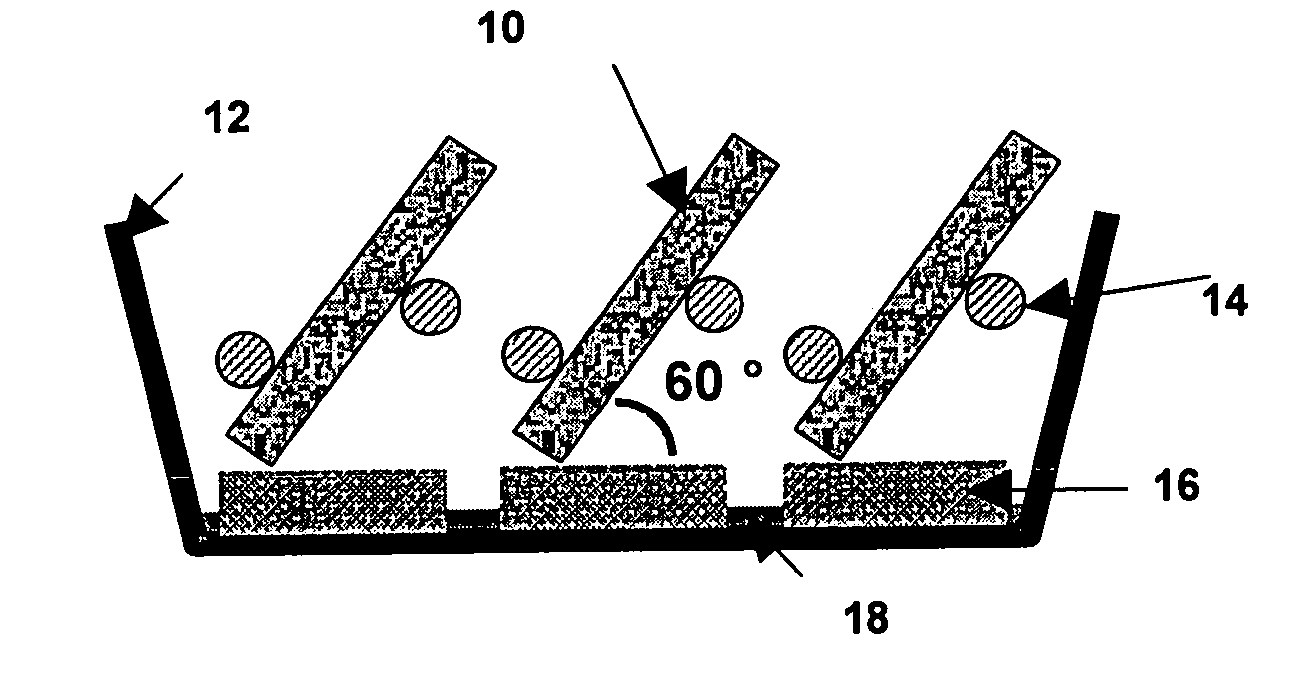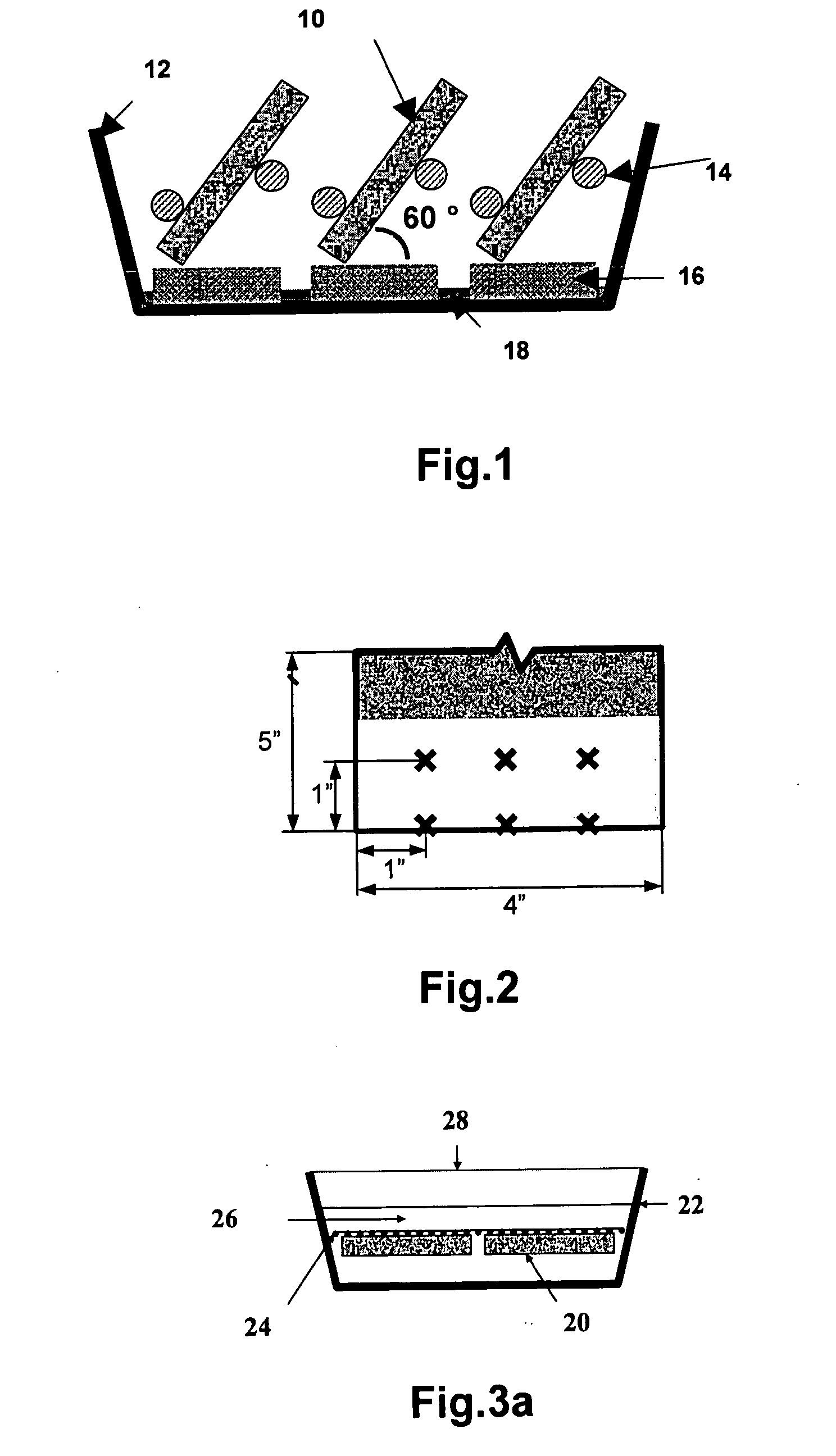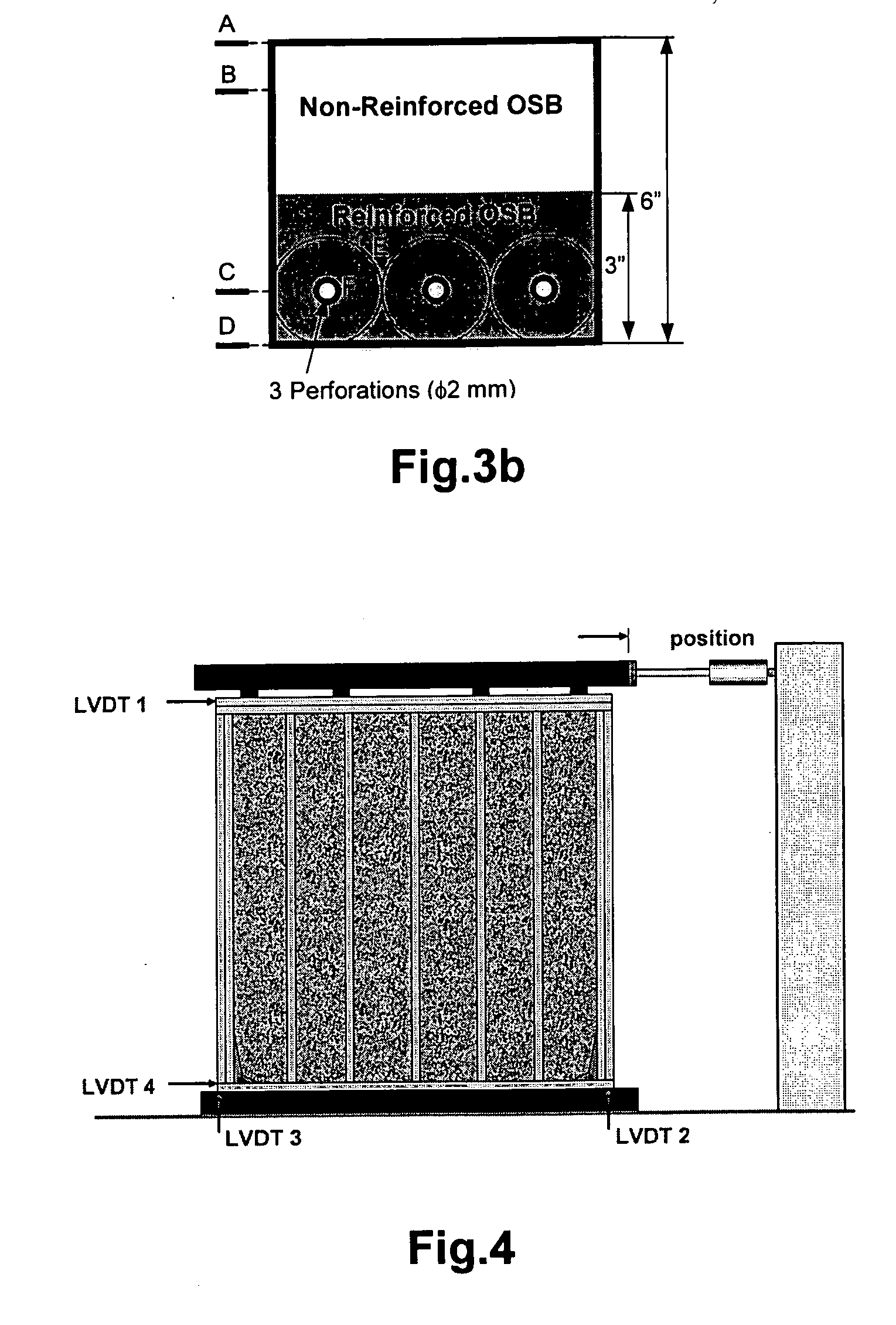Multifunctional reinforcement system for wood composite panels
- Summary
- Abstract
- Description
- Claims
- Application Information
AI Technical Summary
Benefits of technology
Problems solved by technology
Method used
Image
Examples
examples
[0068] Materials tested were polyester (PE), vinyl ester (VE), polyurethane (PU), melamine (ME), oil-based coating (tung oil), water-based coating (waterseal), and hydroxymethylated resorcinol (HMR). After the initial screening tests, the following materials were selected for edge coating: PE, VE, PU, ME and tung oil. The PE, VE and ME were mixed with catalyst as prescribed by the supplier, as shown in Table 1, and applied to OSB in a single layer by brushing.
TABLE 1Wood composites and synthetic materials used in the projectWood-based Composite: Regular OSB panelsResinCatalyst / Percent usedPolyester (PE)Methyl Ethyl Ketone Peroxide / 2%Vinyl Ester (VE)Butanone Peroxide (32% sol) / 2%Polyurethane (PU)Ready-to-UseMelamine (ME)Aluminum Chloride (28% sol) / 3%Tung OilReady-to-UseReinforcements (used with PE / VE resins)Light Woven Glass Fabric (E-Glass)Light Woven Aramid Fabric½″ (Chopped E-Glass Fiber) 1 / 32″ (Milled E-Glass Powder)
[0069] Tung oil was applied to the OSB edge by 15 mm immersion...
PUM
| Property | Measurement | Unit |
|---|---|---|
| Fraction | aaaaa | aaaaa |
| Fraction | aaaaa | aaaaa |
| Fraction | aaaaa | aaaaa |
Abstract
Description
Claims
Application Information
 Login to View More
Login to View More - R&D
- Intellectual Property
- Life Sciences
- Materials
- Tech Scout
- Unparalleled Data Quality
- Higher Quality Content
- 60% Fewer Hallucinations
Browse by: Latest US Patents, China's latest patents, Technical Efficacy Thesaurus, Application Domain, Technology Topic, Popular Technical Reports.
© 2025 PatSnap. All rights reserved.Legal|Privacy policy|Modern Slavery Act Transparency Statement|Sitemap|About US| Contact US: help@patsnap.com



